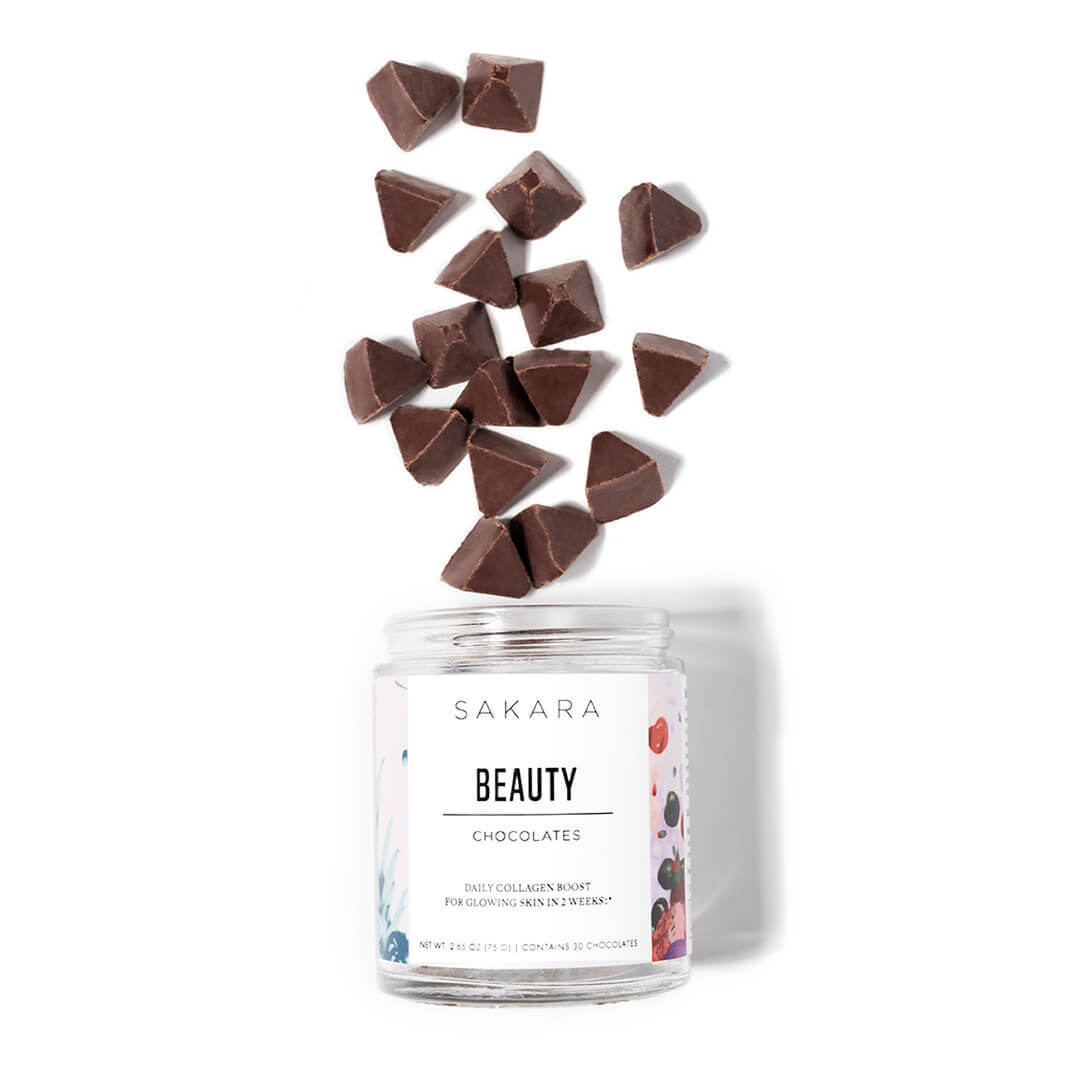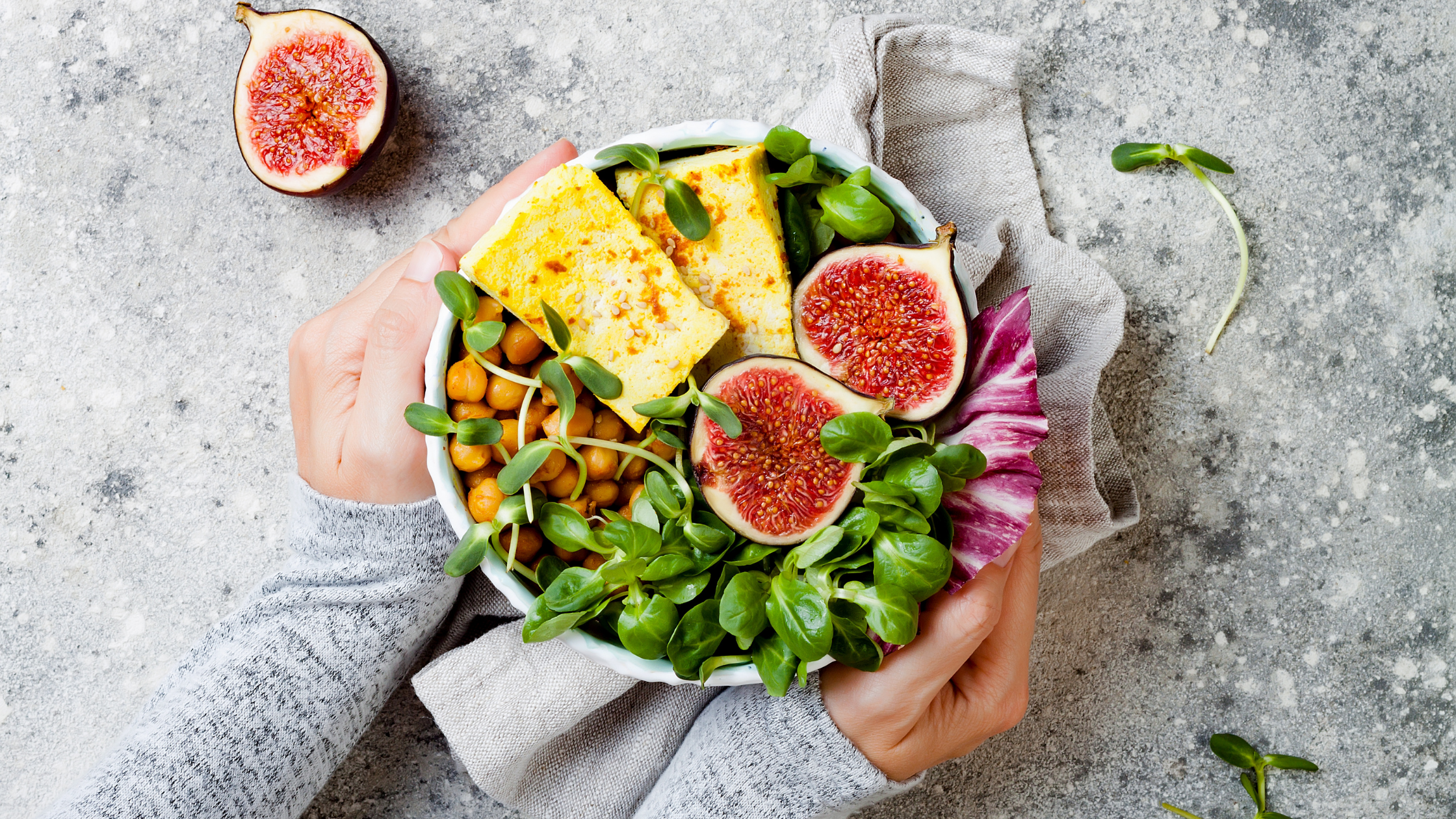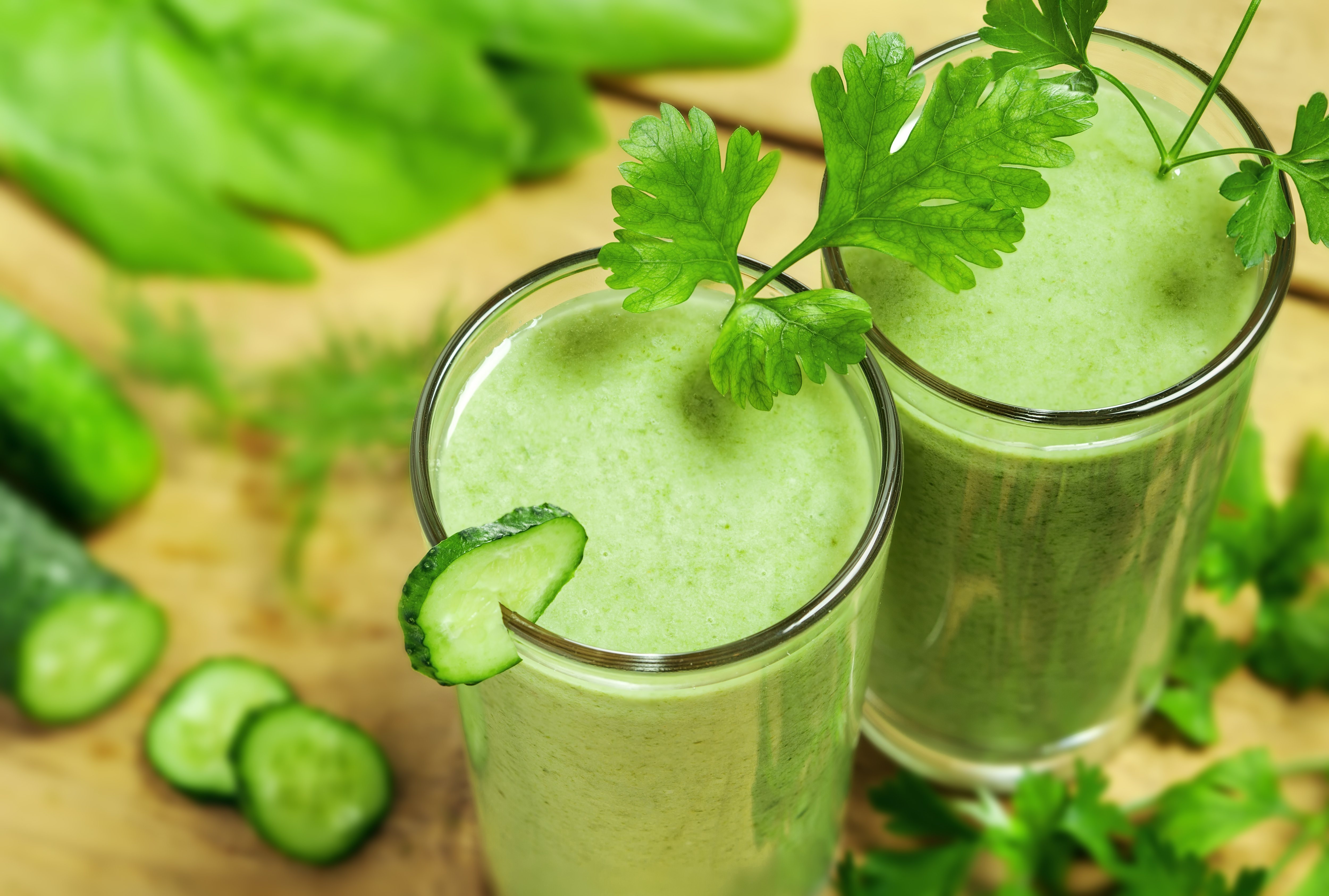Reading Time: 10 minutes
This is the second part of a two-part article about food cravings. Click here to read Part 1.
More research is needed to truly understand food cravings. We all have them, and we all give in to them sometimes. In an ideal world, our food environment and advertising wouldn’t take advantage of our natural tendencies. In the meantime, try these tips.
1. Understand That Food Cravings Are Natural
We all have them, and they’re not a character flaw!
If you need to, go ahead and reread this article and know that cravings are so common. They’re ingrained in our biology.
2. Eat A Variety Of Nutritious Foods
I find that starting each morning with 16 oz of green juice sets me up for the day and drastically reduces food cravings.

Follow this up with a green smoothie or a superfood salad with lots of leafy green vegetables, and you’re providing your body with high-quality nutrition and a solid foundation. The minerals in leafy green vegetables also help keep your blood sugars stable, so you are less likely to experience ups and downs in your appetite.
Ensuring you have an adequate intake of protein is also important. If you are vegetarian include a variety of plant foods such as legumes, nuts, seeds, whole grains, and if necessary supplement with a protein powder.
3. Keep Healthy Snacks Around For When The Cravings Hit
For an afternoon pick-me-up, I like to keep nourishing snacks on-hand like the Super Bars from Sakara Life. They’re great when you may be craving something a little sweet while offering balanced nutrition and targeted health benefits. There are many energy bars on the market, but Sakara is my preferred option because they are low in sugar with clean sources of plant-based protein and superfood ingredients.
I’m also a big fan of their Beauty Chocolates & Probiotic Chocolates for an after-dinner treat. They really satisfy the desire for dessert and contain only 11 calories. When I combine one or two of these with a cup of Reishi or Rooibos tea, it totally eliminates any sweet cravings I may sometimes experience. This little treat is all I need to feel happy and content at the end of the day.

If you’re more likely to experience cravings for salty and crunchy food, a good option is a nutritious dip like guacamole or hummus served alongside some crisp raw veggies. Prep these in advance and store them in individual portions in the fridge so that you are ready whenever a craving strikes. Kale chips can also be a good swap for any of your favorite craveable crunchy snacks.
4. Try To Reduce Your Exposure To Food Cues
(NOTE: These are not your fault, and it’s so challenging to go against the reality of our current food environment.)
If you find that certain activities you do are strongly linked with food cravings (such as sitting in front of a screen means “popcorn time” or walking past the cafe means “coffee and cake time”), try going the extra step and doing something different whenever you can. That may mean less TV or screen time or taking another route home to avoid passing the drive-through or your favorite bakery.
Identify if you crave a food because you’re doing something you associate with eating (e.g., relaxing in front of the television, preparing to watch a movie, commuting). You can try making a quick note on your phone or writing it down in your journal when you experience the cravings. Then, instead of these activities, do something else. Maybe go out for a walk, read a book or try meditation. [11]

5. Are You Truly Hungry?
Physical hunger has a feeling of emptiness in your stomach, fatigue, and/or lightheadedness. If you’re not sure whether you’re hungry or just have a craving, try to delay acting on it right away.
For example, drink a cup of herbal tea and wait ten to fifteen minutes. If that craving hasn’t gone away, eat a nutritious snack or meal. If that doesn’t work either and it’s an insatiable craving, try another distraction.[11]
If it still doesn’t go away, you may very well actually be hungry.
6. If You’re Experiencing A Food Craving – And Are Not Truly Hungry
When experiencing a food craving, attempt to identify where it came from. Was there a food cue (advertisement, smell, memory, or are you looking at something right now that makes you want to enjoy it)? Are you stressed or bored?
If you’re responding to a food cue, do your best to eliminate that cue. Stop paying attention to it by changing the channel, hiding the food, remove the food from your environment, or otherwise distracting yourself from it.[11]
7. Enjoy The Craved Food Slowly And Mindfully
Start with a small amount of the craved food. (Unless it’s fruits and vegetables – but chances are that’s not what you’re craving!)
Mindfulness includes paying attention to whatever arises in the present moment with an open, curious, non-judgmental attitude. It is a state of “enhanced receptive awareness and attention to present reality.” [7]
Mindful eating is therefore eating slower and paying more attention to your food. Do this by chewing well and savoring the smells, tastes, and textures. Your body feels satiated when your stomach feels physically full, and your digestive hormones send a signal to your brain that you’re no longer hungry. By eating slower, you’re allowing these signals to work before you get a chance to overeat.[11]
Studies also show that being mindful of thoughts and emotions can help reduce cravings. One clinical study showed that participants ate fewer cookies when they did a mindfulness activity than those who did not do the activity. Doing a brief mindfulness exercise can even change your hunger level to reduce the influence of the attractiveness of less-nutritious foods.[7]

8. Train Your Brain To Crave Healthy Foods
A few studies show that it may be possible to change the foods we crave. In a process called “cognitive reappraisal,” some people have been able to reduce their cravings for less-nutritious foods and increase them for more healthful choices by focusing on the long-term health consequences of frequently eating that food.[12,13,14]
In one recent study, college students were asked to look at a picture of a food and think about whether it will increase their risk for heart disease or whether it will provide vitamins and minerals to keep them healthy. This cognitive reappraisal exercise affected how frequently and how strongly those foods were craved (e.g., cravings for nutritious foods became stronger and more frequent than before the experiment). Just one week later, some participants reported that they ate fewer of the less-nutritious foods.[12]
While it can be difficult (but not impossible!) for adults to change the foods we already prefer to eat, it may be easier to influence how children develop food preferences. If you have children, you can present them with nutritious foods as often as possible.[10]
Kids usually enjoy a variety of fruits and vegetables when exposed to them at a young age. Try smoothies, banana ice cream, and raw veggie sticks.
9. Make Nutritious Foods More Appealing
If you find yourself eating the same old salads day after day, you may conclude that eating healthy is always dull. In that case, it would be no wonder that you are looking for a bit more excitement on your palate and could begin to crave less healthful options.
To get out of your boring routine of eating the same food all the time, you might look for inspiration in a new health-focused recipe book. Find a few recipes that appeal to you and gradually incorporate them into your lifestyle.
You could also look into healthy meal delivery options that make it easy to eat deliciously well without spending hours in the kitchen. My favorite is the Signature Meal Plan by Sakara Life. Their food is so delicious and satisfying – which means you will really enjoy your meals – while their ingredient profile ticks all the boxes regarding your nutritional needs.
When everything is planned out for you, it also relieves a lot of the stress of deciding what to eat. You can relax knowing that someone else has done all the work for you. It’s like having a nutritionist and personal chef all-in-one!
Receive 20% off when you enter my code
XOLIVEREMEDY at checkout on Sakara Life.

10. Take Care Of Your Psychological Health
Remember that our emotional state—including stress—is linked to food cravings. Whenever I’m especially sleep-deprived or going through a stressful time, I’m always much more likely to crave sugars and carbs. Your psychological health is important when it comes to food cravings.
One of the tools I recently discovered for managing stress is called NuCalm. This app, developed by a neuroscientist and quantum physicist, was originally designed to treat patients with post-traumatic stress disorder and addiction. It’s now used by 3 million people across the world as well as professional sports teams, U.S. military special forces, and the FBI. In 2015, the NuCalm technology was awarded the world’s only patent for “systems and methods for balancing and maintaining the health of the human autonomic nervous system.”
It involves listening to relaxing music encoded with specific frequencies to slow brain wave function to levels required for optimal relaxation and recovery. I’ve been using it for a few weeks now, and it is already helping to improve the quality of my sleep. The NuCalm system also makes it easier to devote more time to self-care if you’re the kind of person that finds it challenging to stay committed to other mindfulness practices.
Try to reduce stress in any way that works for you: meditation, physical activity, gardening, socializing with people you care about, and getting enough sleep.
11. If You Indulged In Your Food Craving
Don’t beat yourself up! We all know that this is so common. Indulging does not make you a bad person. It makes you a human being with a deep biological need for physical and emotional wellness, surrounded by constant food cues and easy access.
If you need to, reread strategies 1-10 again.
Remember that even though right now there is more evidence of the conditioning hypothesis leading to food cravings, that’s not a 100 percent guarantee! Food cravings may be a sign of nutritional needs. If you have an underlying condition or suspect you may be deficient in nutrients, be sure to see your healthcare professional.
References:
1 – Kahathuduwa, C. N., Binks, M., Martin, C. K., & Dawson, J. A. (2017). Extended calorie restriction suppresses overall and specific food cravings: a systematic review and a meta-analysis. Obesity reviews: an official journal of the International Association for the Study of Obesity, 18(10), 1122–1135. https://doi.org/10.1111/obr.12566
2 – Examine’s Nutrition Examination Research Digest. (2017, October). Can dieting actually suppress food craving? Issue 36. Retrieved from https://examine.com/nerd/article/can-dieting-actually-suppress-food-craving/
3 – van den Akker, K., Schyns, G., & Jansen, A. (2018). Learned Overeating: Applying Principles of Pavlovian Conditioning to Explain and Treat Overeating. Current addiction reports, 5(2), 223–231. https://doi.org/10.1007/s40429-018-0207-x
4 – Harvard Health Publishing. (2019, June 24). Why people become overweight. Retrieved from: https://www.health.harvard.edu/staying-healthy/why-people-become-overweight
5 – Blechert, J., Klackl, J., Miedl, S. F., & Wilhelm, F. H. (2016). To eat or not to eat: Effects of food availability on reward system activity during food picture viewing. Appetite, 99, 254-261. doi: 10.1016/j.appet.2016.01.006
6 – Lee, Y. H., Kim, M., Lee, M., Shin, D., Ha, D. S., Park, J. S., Kim, Y. B., & Choi, H. J. (2019). Food Craving, Seeking, and Consumption Behaviors: Conceptual Phases and Assessment Methods Used in Animal and Human Studies. Journal of obesity & metabolic syndrome, 28(3), 148–157. https://doi.org/10.7570/jomes.2019.28.3.148
7 – Fisher, N, Lattimore, P., & Malinowski, P. (2015). Attention with a mindful attitude attenuates subjective appetitive reactions and food intake following food-cue exposure. Appetite, 99, 10-16. ISSN 0195-6663.
8 – Monteiro, C., Cannon, G., Moubarac, J., Levy, R., Louzada, M., & Jaime, P. (2018). The UN Decade of Nutrition, the NOVA food classification and the trouble with ultra-processing. Public Health Nutrition, 21(1), 5-17. doi:10.1017/S1368980017000234
9 – Harvard Health Publishing. (n.d.). How stress can make us overeat. Retrieved from https://www.health.harvard.edu/healthbeat/how-stress-can-make-us-overeat
10 – Harvard Health Publishing. (2017, June 5). Controlling what — and how much — we eat. Retrieved from https://www.health.harvard.edu/staying-healthy/controlling-what–and-how-much–we-eat
11 – Harvard Health Publishing. (n.d.). 5 ways to outwit your appetite. Retrieved from https://www.health.harvard.edu/staying-healthy/5-ways-to-outwit-your-appetite
12 – Reader, S. W., Lopez, R. B., & Denny, B. T. (2018). Cognitive reappraisal of low-calorie food predicts real-world craving and consumption of high- and low-calorie foods in daily life. Appetite131, 44-52.
13 – Giuliani, N. R., Calcott, R. D., & Berkman, E. T. (2013). Piece of cake. Cognitive reappraisal of food craving. Appetite, 64, 56-61. https://doi.org/10.1016/j.appet.2012.12.020
14 – Siep, N., Roefs, A., Roebroeck, A., Havermans, R., Bonte, M., & Jansen, A. (2012). Fighting food temptations: the modulating effects of short-term cognitive reappraisal, suppression and up-regulation on mesocorticolimbic activity related to appetitive motivation. Neuroimage, 60(1), 213-20. doi: 10.1016/j.neuroimage.2011.12.067
15 – Hamamichi, R, et al. “Taste Bud Contains Both Short-Lived and Long-Lived Cell Populations.” Neuroscience., U.S. National Library of Medicine, 15 Sept. 2006, www.ncbi.nlm.nih.gov/pubmed/16843606.
16 – Alcock, J, et al. “Is eating behavior manipulated by the gastrointestinal microbiota? Evolutionary pressures and potential mechanisms.” Willey Online Library, 08 Aug, 2014, https://onlinelibrary.wiley.com/doi/full/10.1002/bies.201400071
Disclosure: This post contains affiliate links, which means that if you click on a link and purchase a product, we receive a small commission. Thank you for supporting Live Remedy!


